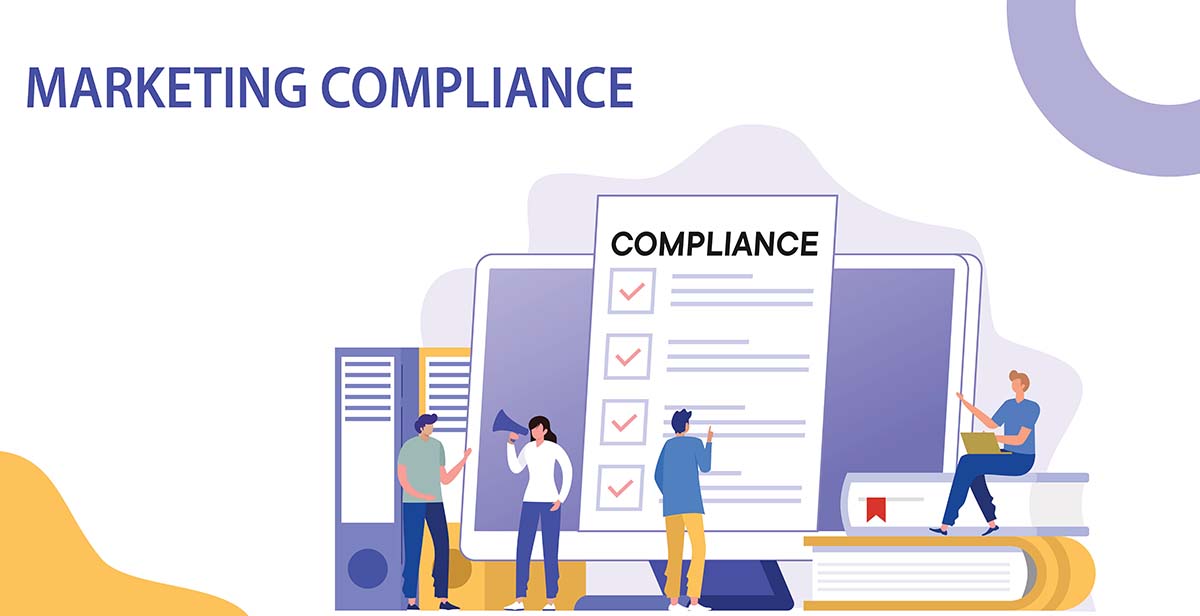
Understanding Marketing Compliance and 5 Guidelines to manage it.
By Jodie Byass
The world of marketing has undergone significant changes in the past decade, with digital platforms such as social media, email campaigns, and websites creating new channels to engage with consumers. However, with these new channels comes the need for marketers to manage multiple channels simultaneously, and this has resulted in a greater need for marketing compliance across all channels. Failure to maintain compliance can lead to legal repercussions and damage to a brand's reputation, making it vital for marketers to understand what marketing compliance is and the guidelines they need to follow to stay on the straight and narrow.
Marketing compliance refers to a framework of rules and guidelines designed to protect both the brand and the consumer. It can be divided into two primary areas, external and internal compliance. External compliance involves adhering to regulatory laws and guidelines set by government bodies and consumer watchdog organizations to protect consumers from being deceived or taken advantage of by brands. For example, in Australia, organizations like the Australian Competition and Consumer Commission (ACCC), Australian Communications and Media Authority (ACMA), and Advertising Standards Bureau monitor consumer advertising. In the US, the Federal Trade Commission (FTC), Consumer Financial Protection Bureau (CFPB), and Federal Communications Commission (FCC) oversee consumer rights. Marketers must ensure they comply with these regulations to avoid legal action, fines, and other penalties.

Internal marketing compliance, on the other hand, refers to a brand's ability to maintain consistency in branding across all its communications. This includes guidelines on logo usage, fonts, colors, and messaging. A brand must ensure that all marketing materials align with the established guidelines, and any deviation from these guidelines can harm the brand's reputation and lead to confusion among consumers.
To maintain marketing compliance, marketers should follow these five guidelines:
Know the regulations and guidelines
Marketers need to understand the regulations and guidelines set by government bodies and consumer watchdog organizations to comply with external marketing compliance. This includes being aware of any changes to regulations and ensuring compliance across all marketing channels. Failure to comply with regulations can lead to legal action, fines, and other penalties. Therefore, marketers should stay up-to-date with any changes to regulations and ensure compliance across all marketing channels.
Maintain consistency in branding
Maintaining brand consistency is a crucial aspect of internal marketing compliance. A brand should ensure that all marketing materials align with the established guidelines, including logo usage, fonts, colors, and messaging. Any deviation from these guidelines can harm the brand's reputation and lead to confusion among consumers. Therefore, marketers should ensure that all marketing and brand collateral comply with the established guidelines.
Implement a robust approval workflow process
A robust approval workflow process is essential to ensure that marketing campaigns adhere to both external and internal marketing compliance. The process should include all necessary stakeholders and ensure that every marketing asset goes through a review and approval process before going public. Marketers should ensure that the right stakeholders are involved at the right time and that final artwork and messaging are approved before going to market. A robust approval workflow process can help prevent mistakes and ensure that marketing materials are compliant with regulations and guidelines.
Keep an audit trail of marketing work
Keeping an audit trail of marketing work is crucial in managing internal marketing compliance. Brands must track every step of their approval workflow, including all communication, feedback, changes, and approvals. In case of an investigation, an audit trail can be the difference between the brand facing legal action or not. Marketers should ensure that they keep an accurate and up-to-date audit trail of marketing work to help manage internal marketing compliance effectively.
Invest in compliance training
Investing in compliance training for all employees involved in marketing is essential. This training should cover all relevant regulations and guidelines, as well as the brand's internal marketing compliance policies and procedures. It's essential to ensure that everyone involved in marketing understands their roles and responsibilities. ADMA is the principle industry body for data-driven marketing and offer a range of courses for marketers with a focus on compliance.
Conclusion
In conclusion, marketing compliance is an essential aspect of any business, and it should not be overlooked. It is critical to have a solid understanding of all the laws and regulations that apply to your industry, as well as to stay up to date with any changes that may occur. By doing so, you can avoid costly legal battles, protect your brand's reputation, and ensure that your marketing efforts are effective and successful.
Compliance should be integrated into all aspects of your marketing strategy, from the development of advertising materials to the execution of promotional campaigns. You should have clear policies and procedures in place to guide your marketing team, as well as regular training and monitoring to ensure that everyone is following the rules.
Remember, marketing compliance is not just about avoiding legal trouble; it is also about building trust with your customers and demonstrating that you value their privacy and security. By taking a proactive approach to compliance, you can build a stronger, more successful business that will thrive in today's complex and rapidly changing marketplace.
